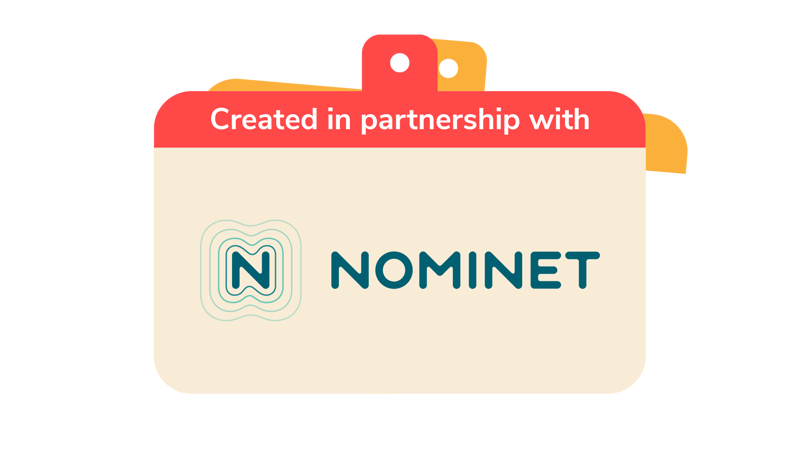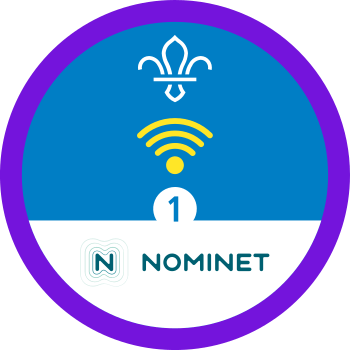
It’s just banter
You’ll need
- Pens or pencils
- A4 paper
- Something to mark lines (for example, chalk, masking tape, or rope)
Before you begin
- Use the masking tape or chalk to make a line across the space. It should be long enough for everyone to stand on side by side (without being squashed).
- Write ‘banter zone’ on one piece of paper and ‘bullying zone’ on another. Use the sticky tack to stick one sign at each end of the line.
- If you’re working towards the Digital Citizen Staged Activity Badge, make sure to complete the final creative part of this activity to meet requirement 2 of Stage 3.
What’s banter?
- The person leading the activity should show everyone the Yellow Card. They should explain that it’s Scouts’ code of practice to keep everyone safe and go through what it says.
- Everyone should work together to come up with a simple definition of banter. Banter is playful, friendly teasing. Everyone’s in on the fun and no one is upset or hurt.
- Everyone should think about when banter may turn into bullying. Banter turns into bullying if someone feels picked on or unhappy – especially if they want the teasing or joke to stop and it carries on, or if it becomes unkind.
Figure it out
- The group should split in half – half should think from the perspective of the main character and half from the perspective of the main character’s friends.
- The person leading the game should read one of the character stories below.
- As they read, everyone should move along the line according to their perspective as the main character or their friends. They may start in the middle, and move back and forwards towards banter or bullying as the story progresses.
- Once the story’s finished, everyone should recap. Did people move towards one zone near the end? Was there a clear point where the banter became something else? Did the main character group move towards the ‘bullying’ end before the main character’s friends?
- Everyone should go back to where they began and repeat steps one to four for each of the character stories below. It’s a good idea for everyone to take turns at being the main character and their friends so they understand both perspectives.
- By the end, everyone may find it easier to identify when fun banter starts to become unkind and move towards the bullying zone.
- Everyone should work together to identify the signs that an interaction’s moving from the banter to the bullying sign – are there words or actions that suggest it’s starting to become unkind?
Character stories
Zayn’s not very good at football. His friends make jokes about how he’ll never make the school team or have a career in the Premier League. Zayn’s OK with this – he still enjoys playing for fun at lunchtime and he knows that he’s good at other things. He laughs with his friends about how he’d be rubbish on the school team – he’d probably kick the ball the wrong way or fall over during an important match!
Some of Zayn’s friends continue the joke the next day. Soon, everyone in his class is making jokes and it shows no sign of stopping. He feels a bit picked on so he says, ‘OK, enough now – the joke’s getting old!’.
No one listens, though. Every lunchtime, Zayn’s friends gather round him and make ‘jokes’ about how bad he is at football. Everyone laughs. No one wants him to play on their team, then Zayn’s friends steal his shoes and throw them on the roof so he can’t play at all. They keep doing this every day for a week.
This week, Taylor’s been really busy with after school activities. They’ve been so busy that they totally forgot to do their Maths homework! Thankfully, they were able to copy their best friend’s. This doesn't usually happen, and Taylor was a bit embarrassed, but they laughed about it with their friends.
That evening, someone makes a social media story with a photo of Taylor and the hashtag #fail on it. Taylor knows they meant it as a joke, and they can kind of see how it’s funny, but they message the person and ask them to take it down anyway.
Before they know it, some of Taylor’s friends have shared the story and it feels like it’s everywhere. The next day, everyone in the school seems to know about Taylor’s mistake. They start whispering ‘#fail’ to Taylor when they pass in the corridor. This goes on for almost a whole term.
Anika’s the only girl on the rugby team. Her friends tease her about being ‘one of the boys’ and being ‘obsessed with rugby’. Anika laughs because it’s kind of true – she is obsessed with rugby!
One weekend, someone starts a rumour online that Anika is actually a boy. Soon, everyone starts repeating the rumour.
People Anika doesn’t know start picking on her, and it makes her thinks about giving up rugby all together.
With the help of her friends, Anika makes a video about women in rugby and the benefits of playing a team sport. Soon, some of the people who were mean to her apologised. The unkind behaviour goes back to being gentle teasing, mainly from her close friends.
Sam confides in a friend about their crush on a classmate. They ask their friend not to tell anyone, but soon everyone knows. People start going ‘whooooo’ when the classmate walks in. Sam’s embarrassed, but they try not to take too much notice and assume the teasing will stop soon.
One day, someone pushes Sam so they fall onto the classmate they have a crush on. The classmate tells everyone that Sam’s a ‘creep’ and everyone laughs.
Later, Sam finds out that they have been removed from a chat group and blocked from their friends’ social media. No one talks to them at school any more.
Tyrell is super-organised. He creates a chat for everyone going on camp and posts a countdown, as well as reminders about the clothes and equipment everyone needs to pack. Tyrell’s friends start calling him ‘Captain Control’ and even create a funny meme. Tyrell’s OK with this – someone has to be in charge, after all, and he knows his friends give each other funny nicknames all the time.
Tyrell keeps posting in the group chat every day. Some of the group start feeling a bit annoyed and change the joke name to ‘Captain Control Freak’. Tyrell laughs along, but feels hurt.
After that, every time Tyrell posts a reminder someone responds with a joke about him. Everyone laughs at Tyrell – he’s left out of the joke, but he can still see all of the unkind messages.
Tyrell confronts the group, but they say it’s ‘just banter’. He explains how upset he is, and that he’s only trying to help. The group understand the impact they’ve had, and they all apologise. Tyrell says he’ll try his best to stick to one reminder a day. Everyone gets on well in the chat now – people still call Tyrell ‘Captain Control’ sometimes, but it’s just for fun and everyone (including Tyrell) finds it funny.
Get creative
For this activity to meet requirement 2 of Stage 3 of the Digital Citizen Staged Activity Badge, everyone should create something to share what they've learned about staying safe online.
- After the activity everyone should get into smaller groups and talk about what they learned.
- Everyone should think about what to do if they feel uncomfortable when online. Where can they find support and what actions can they take?
- Groups should use the main points from their discuss to create something to help share their message about what to do if they feel uncomfortable online.
- Every group should share their creation, and the main points from their discussion. If they’re suitable, you could ask the person in charge of the group’s social media or website to share the best ideas online.
Reflection
This activity was a chance to think about communication. How did the main character and their friends communicate? Did the main character communicate when it was going too far? What signs can people look out for, even if someone doesn’t say anything? Banter might be going too far if someone looks upset, if they’re not laughing any more, if they’re not joining in, or if they withdraw. How could someone communicate that banter has gone too far? Everyone could practice ways to tell others to stop (whether they’re the target or just someone watching).
This activity also helped everyone to care about others and their feelings. Banter and teasing should be fun for everyone involved; it’s important that everyone can recognise when the fun moves into the bullying zone. In some cases, bullying can even move into a criminal offence. How did it feel to be the main character in each story? How did it feel to be their friends?
What could people do if banter turned into bullying in real life? Online, they could mute, block, or report then talk to a friend or trusted adult. In real life, they could ask clearly and firmly for it to stop, and speak to a friend or trusted adult. Remember, bystanders can make a big different – they can speak up to stop bullying and check that people are OK. At Scouts we have our Yellow Card so that everyone knows how to keep each other safe, and how to respond if people are making you feel uncomfortable in person, or online.
Safety
All activities must be safely managed. You must complete a thorough risk assessment and take appropriate steps to reduce risk. Use the safety checklist to help you plan and risk assess your activity. Always get approval for the activity, and have suitable supervision and an InTouch process.
- Active games
The game area should be free of hazards. Explain the rules of the game clearly and have a clear way to communicate that the game must stop when needed. Take a look at our guidance on running active games safely.
Once everyone’s got the hang of it, people could get really into character. They could explain how they feel, what they want to do next, and what they (or others) could do differently.
Encourage everyone to work together and support each other. Be aware of any specific topics or issues you may need to avoid – if someone’s experienced a certain type of bullying, or bullying about a specific topic, you may need to warn them in advance and avoid any scenarios that are too similar.
All Scout activities should be inclusive and accessible.
If you finish the stories in the sheet, you don’t have to stop the game. Why not ask small groups to create their own scenarios for everyone else? They could create short dramas to show everyone.
After the activity, you could use the opportunity to create an anti-bullying policy together. If everyone’s involved, they'll have ownership over it.
Young people can lead the game and create their own scenarios. They may want to draw from their own experiences and observations, but all the stories must be fictional.
